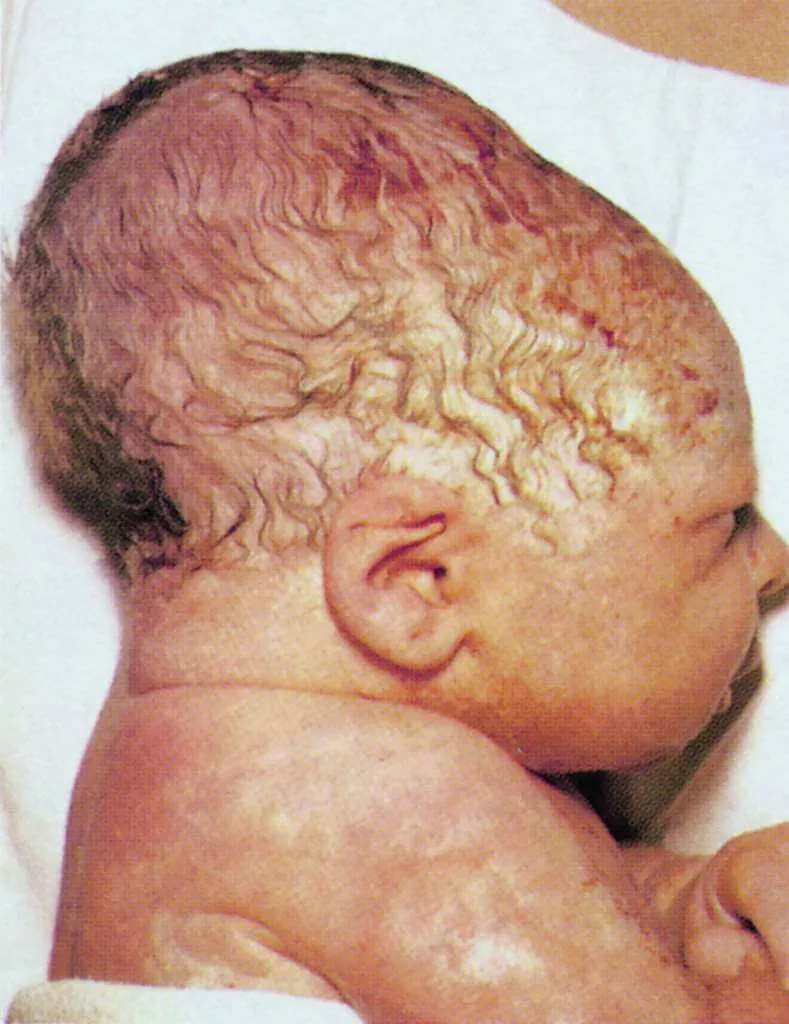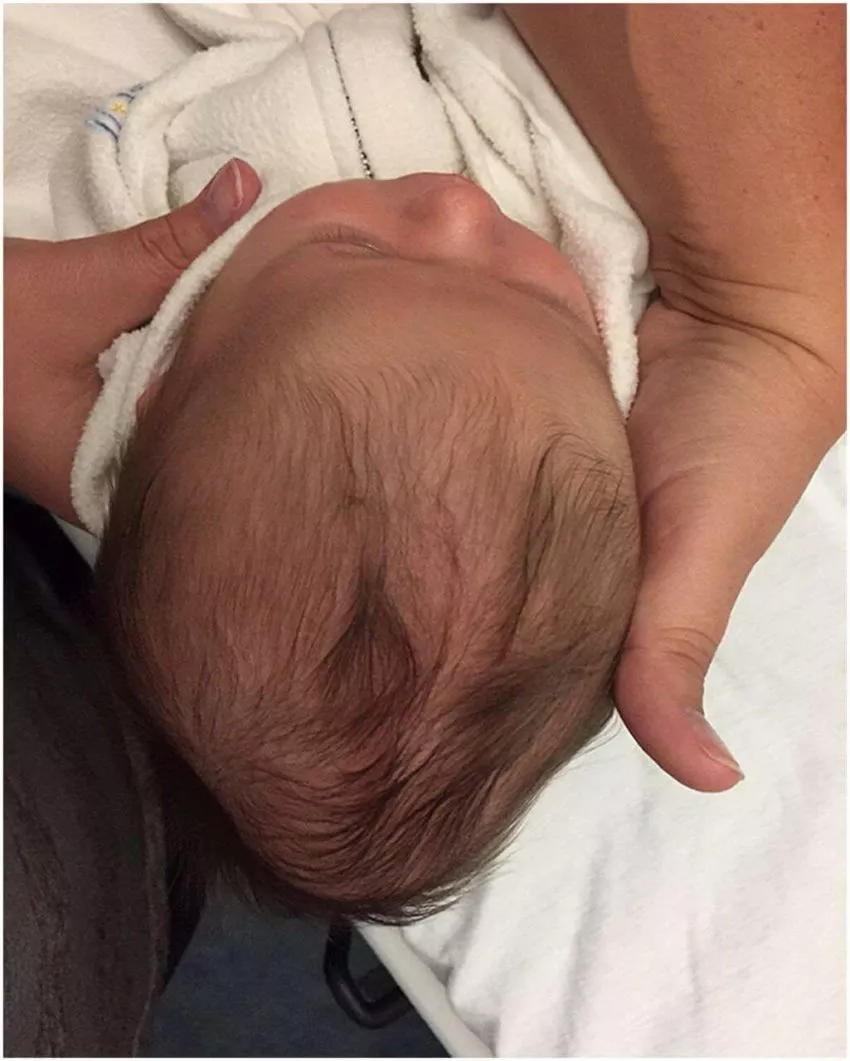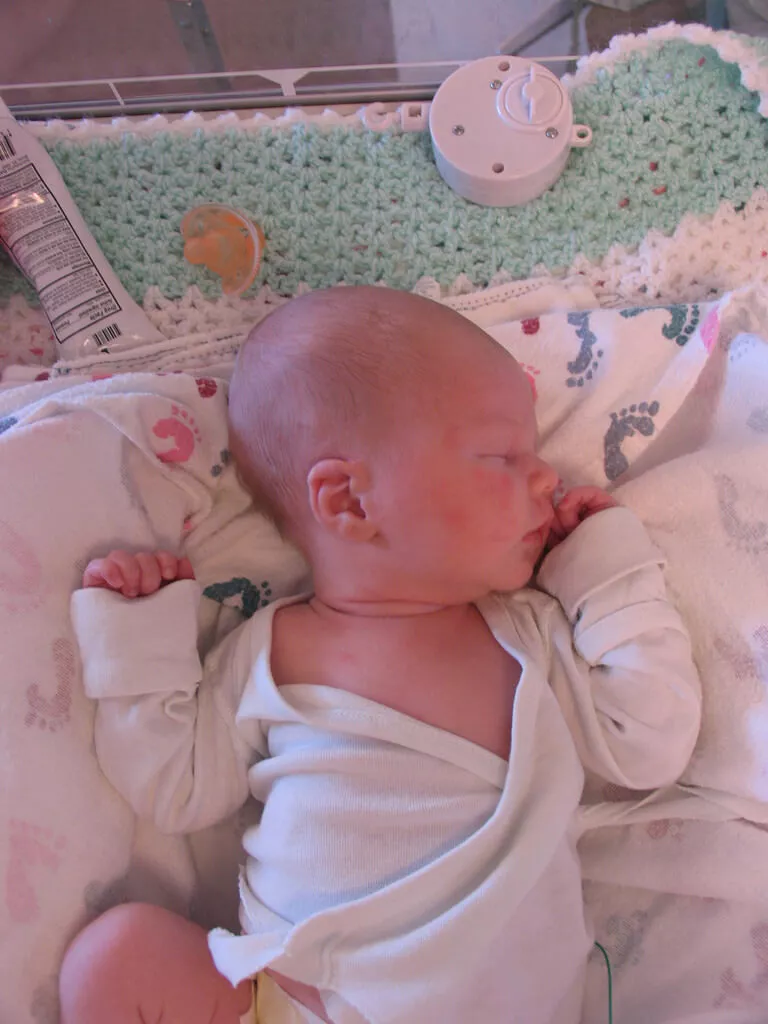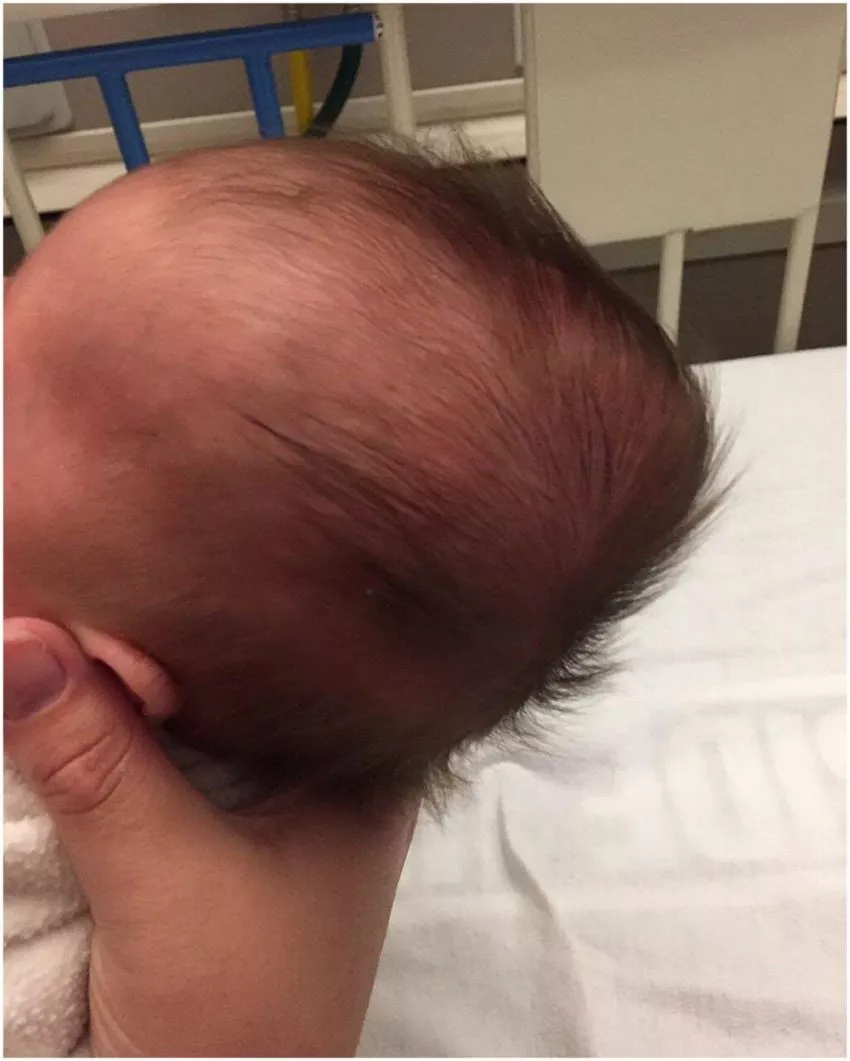Harptimes.com–As parents, you have the responsibility to take care of your own children. But you must also learn about certain medical conditions by yourself especially in this modern and medical age. Because some children disabilities are caused by birth injuries. One of the most common birth injuries is caput succedaneum.
For your information, birth injuries are the result of mechanical forces and physical pressures during the baby delivery.
These damages actually can be categorized as birth traumas as well. In most cases, they occur when a baby comes down the birth canal. Then, lots of newborns get slightly injured.
Do not let the birth mistakes transform your adorable kid to a disabled one. Prevent those medical malpractices from happening by having sufficient knowledge.
If you want to advocate your children, you are urged to completely understand the childbirth process and the other things in the right way. That’s why we gather up everything relates to the caput succedaneum for you.
Caput Succedaneum Definition

Medically speaking, caput succedaneum means edema or swelling on the baby’s scalp. It comes in the form of lump immediately after vaginal delivery.
For most babies, they suffer from caput succedaneum because of the uterus tensions and strong vaginal wall pressures.
It also states a condition of infant injuries during the head-first labor. As the effect, infant’s head received the pressure from the vaginal canal.
Furthermore, membranes of the baby automatically break. Whereas the amniotic sac is no longer acting as a buffer to protect the baby.
Fortunately, caput succedaneum is not life-threatening. It is surely harmless birth injury and does not show serious damage to the baby’s brain and bones.
Despite this fact, caput succedaneum may lead to another condition called jaundice. It turns whites of eyes and skins yellow due to an incapability to process bilirubin.
Sometimes, caput succedaneum happens without any delivery reason. On the other hand, it can be found out even when the baby is inside the mother’s womb.
To identify it earlier, you need to have a pregnancy ultrasound scan. It is highly recommended primarily during your late pregnancy.
Factors That Increase The Risk of Caput Succedaneum

Improper usage of requirements such as a vacuum extraction tools and forceps during the normal baby delivery
This may develop the caput succedaneum. If the tools are used forcefully, it can trigger the same thing too.
Braxton-Hicks contractions refers to ‘false’ labor pains
Because they occur shortly before your real labor pains. In this situation, your abdominal area gets cramping and contracting during the pregnancy. Plus, the uterine muscles becomes more flexible before giving birth your baby.
Deficiency of amniotic fluid in your uterus
This fluid is slightly white or yellow and translucent. Its functions to surround and cushion the fetus during your whole pregnancy. Without having enough amniotic fluid, your unborn baby’s head is not well-protected.
A tough delivery increases your baby’s risk from getting caput succedaneum too
It is considered as the long childbirth when it takes up to more than 18 hours. Since it needs too much times, it creates a swollen scalp and bump.
The process of delivery also depends on the size of your pelvis
It certainly affects on whether your infant’s head can pass through the vaginal canal or not. If it has an inadequate proportion, there are many pressures placed on the baby’s head. The bigger the pelvis, the easier childbirth will be.
It typically occurs because the size of your baby is large (from 8 to 13 ounces)
As the consequence, it definitely impedes the vaginal delivery of your baby and results in caput succedaneum.
Medical malpractice could triggers caput succedaneum
It is commonly done by staffs and doctors who help your delivery process. Unfortunately, they may think too long to do the Caesarean section. Another kind of malpractice is the medical birth team works very slowly. So, the baby’s skull gets many stresses.
Amniotic sac ruptures prematurely will also cause caput succedaneum
The membranes and fluid of amnion, buffer your baby from internal and external pressures. When the natural shield breaks early, there is no cushion during your vaginal delivery anymore.
A certain baby position like head-up tends to make vaginal birth simply harder
You also experience the birth canal issues for sure. Since breach is not an ideal position, your baby gets through the vaginal canal in prolonged times. Then, caput succedaneum is likely to be the end result.
Giving birth a baby for the first time is scary, nervous, exciting, and confusing
In this period, you possibly spend too much time to push your baby out. If the labor and delivery process is too difficult, your baby is gonna suffer from caput succedaneum.
Caput Succedaneum vs Cephalohematoma
Another birth injury is known as cephalohematoma. Generally, people always confuse it with caput succedaneum. In fact, it is quite different from caput succedaneum.
Cephalohematoma is caused by deeper blood builds up in the baby’s head. This fluid comes from ruptured blood vessels. If caput succedaneum is swelling and bruising of the scalp, cephalohematoma refers to bleeding under the scalp.
Cephalohematoma occurs as the result of pressures from pelvic bones on the infant’s skull. Moreover, this condition is more hugely seen in women who give birth male newborns.
To make you more informed about the differences between caput succedaneum and cephalohematoma, we present their symptoms here.
The Symptoms of Caput Succedaneum

They probably vary from one baby to another baby. Although they are not dangerous, many parents become panic. Panic attacks are exactly similar to Zoloft withdrawal symptoms.
- A baby who suffers from caput succedaneum mainly has soft swollen scalp
When you press the puffiness, its texture is like dimple in the flesh. In addition to that, skull’s swelling appears on one side. But, it can extend to more than half of the total scalp area.
- If your baby experiences it, you will clearly spot discolored scalp
Your infant’s scalp is not only spongy, but also get reddened. Although there is a discoloration, it just affects a small area or like a large egg.
- Since neonatal head is still flexible and soft, pressures will give impact to baby’s head shape
Furthermore, another hallmark symptom of this condition is an increased molding on the scalp. Even though it seems to be an abnormal head shape, the fastest recovery takes within several days.
The Symptoms of Cephalohematoma

Caput succedaneum’s symptoms are seen shortly after baby delivery. On the contrary, you can notice the symptoms of cephalohematoma within 24 hours after childbirth.
- Cephalohematoma is marked by firm mass lesions
They eventually harden and become a lump. Then, the blood clot covers bone and a whole periosteum of baby’s skull.
- Since cephalohematoma comes from coagulated blood, there will be discoloration on the neonatal’s skin too
The skin changes are the effects of blood reabsorbing. But, discoloration and bruising are more extensive than caput succedaneum. While severe ecchymoses lead to hyperbilirubinemia.
- There are clearly visible edges on the head of the cephalohematoma sufferer
They mostly end at suture lines. Those boundaries are set by underlying bone. Regarding the head molding, it lasts much longer than caput succedaneum. Then, it needs around several weeks or months to resolve.
Cephalohematoma vs Caput Succedaneum
These two birth injuries are described as abnormalities of newborns. That means they are quite disconcerting and distressing. Many people occasionally get them wrong, because they both present in the baby’s head.
Beside having distinctions on their symptoms, healing processes of these common infant defects are not alike. Please, bear in your mind that improper management will lead to the fatal result.
Although they are not so severe, as a parent you must take the best examination and step. Plus, these birth traumas should be regularly monitored to avoid unwanted things.
Without further ado, we have curated the specific informations to handle caput succedaneum and cephalohematoma. So, let’s have a look at two different management.
Treatment for Caput Succedaneum

After the childbirth, there must be a physical check-up by the doctor. It is seriously important as it helps diagnose whether your infant experiences caput succedaneum or not. If yes, the swelling scalp is apparently painless. It just causes a minor discomfort for your newborn though.
Luckily it is not considered as an extreme abnormality. Because it won’t fuse the head bones of your baby. Plus, your infant’s head is still able to move slowly. Infrequent cases, caput succedaneum will subside on its own too.
The caput succedaneum normally does not require any special treatment. Because the edema eventually will be absorbed again.
To fully disappear, it usually takes up around 3-4 days of baby first life. For the baby’s pointed head, it would go away within several weeks. At the end of the day, your baby has the “normal” shape.
If the condition is not complicated at all, the doctor will never attempt to drain the baby’s scalp. Because it tends to cause more bad than good, which can lead to the infection and worsen the condition for sure. The best way is just to wait and see until it disappears over the times.
However in such rare cases, certain treatment is necessarily vital because it can result in another health issue like jaundice. When your newborn experiences mild jaundice, it diminishes by the time the baby is 2-3 weeks.
But if the jaundice is moderate or really severe, your neonatal baby must stay longer at an intensive care unit. Another healing process is to take light phototherapy. This treatment is widely used to lower the bilirubin level in infant’s blood.
The hemorrhagic caput succedaneum probably happens too. In a more concerning case, the circulating blood volume may lower and lose.
To handle it, doctor will obviously take a blood circulatory support and blood transfusion. Without doing these two treatments, caput succedaneum is much more difficult to heal.
Treatment for Cephalohematoma

For the baby who currently suffers from cephalohematoma, this birth injury will resolve by itself. It persists for a couple of months or a few years. Despite its ability to fade considerably, support and observation of affected area are still crucial.
During the healing process, you possibly can spot the hard lump on the baby’s head. Plus, your baby may display two additional symptoms like diarrhea and nausea which are comparable to Otezla side effects. They actually signed the more intense and severe medical condition.
Then, the follow-up care for cephalohematoma should be done immediately. First thing first, you have to take your neonatal infant to the doctor. Let the doctor decide the best step for your beloved one. Mostly, phototherapy is so necessary to throw off accumulated blood.
In the most extreme cases, doctors generally choose to drain blood build-up. But if it already lowers the red blood cell of your newborn baby, transfusion will surely be the greatest decision.
In such condition, transfusion works as a major healing treatment and possibly takes relatively longer times to resolve. For many severe cephalohematomas, doctors will suggest cranial molding helmet therapy. It is greatly prescribed to dissipate the asymmetry of head shape.
Commonly, the molding helmet is placed on the baby’s head for approximately 18-29 hours a day. It is done by doctors until the cephalohematoma finally has gone down.
Caput Succedaneum Cross Suture Lines

The puffy lesions are part of caput succedaneum. In this condition, swollen scalp crosses over the infant’s cranial suture lines. For information, suture lines are the anatomical marks where the bony plates of infant’s skull attach together. They are largely found out in neonatal babies.
When the swelling has extended across baby’s midlines, there must be a head molding. For some sufferers, it might results in permanent hair loss (alopecia) in the impacted areas of the skull.
In spite of the fact that suture lines present as the predominant sites for bone growth, your infant’s head shape will certainly even out. It is simply gonna be normal on its own. Because an edema with the indistinct borders just occurs temporarily.
In short, caput succedaneum is not the terrifying infant condition that you should worry about. As long as your baby is properly treated by the medical professionals, you just wait for the good result.